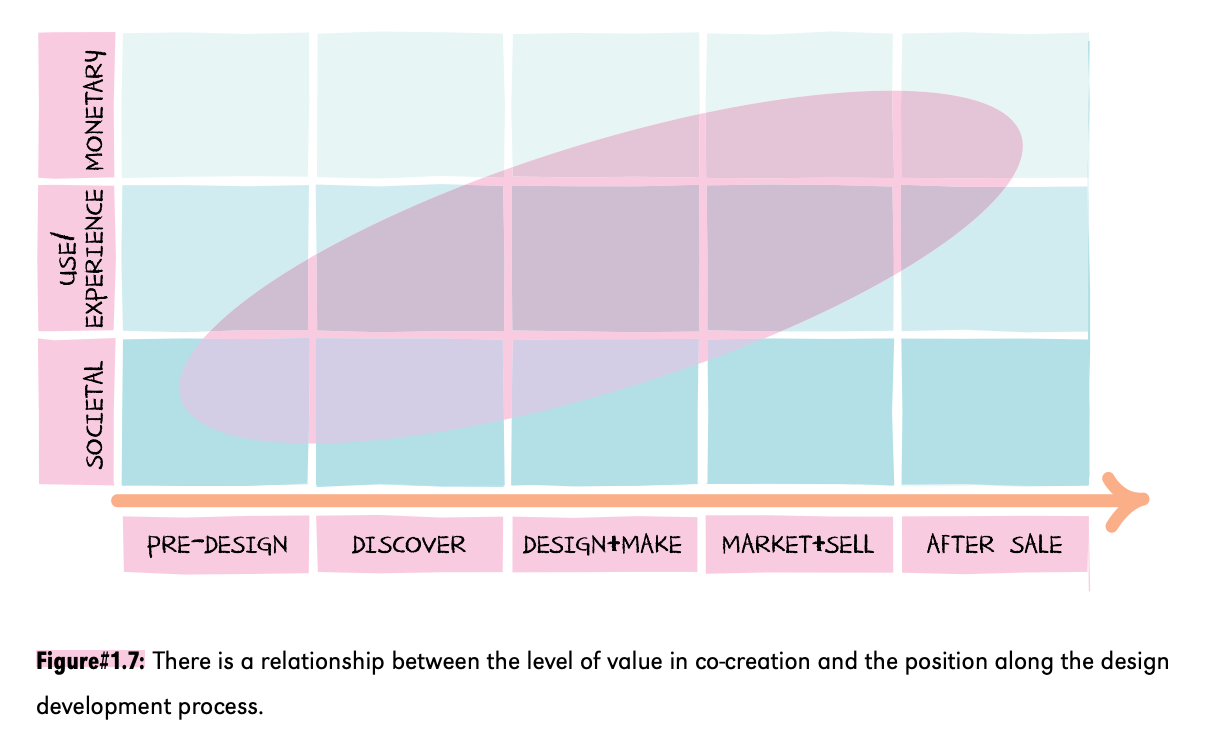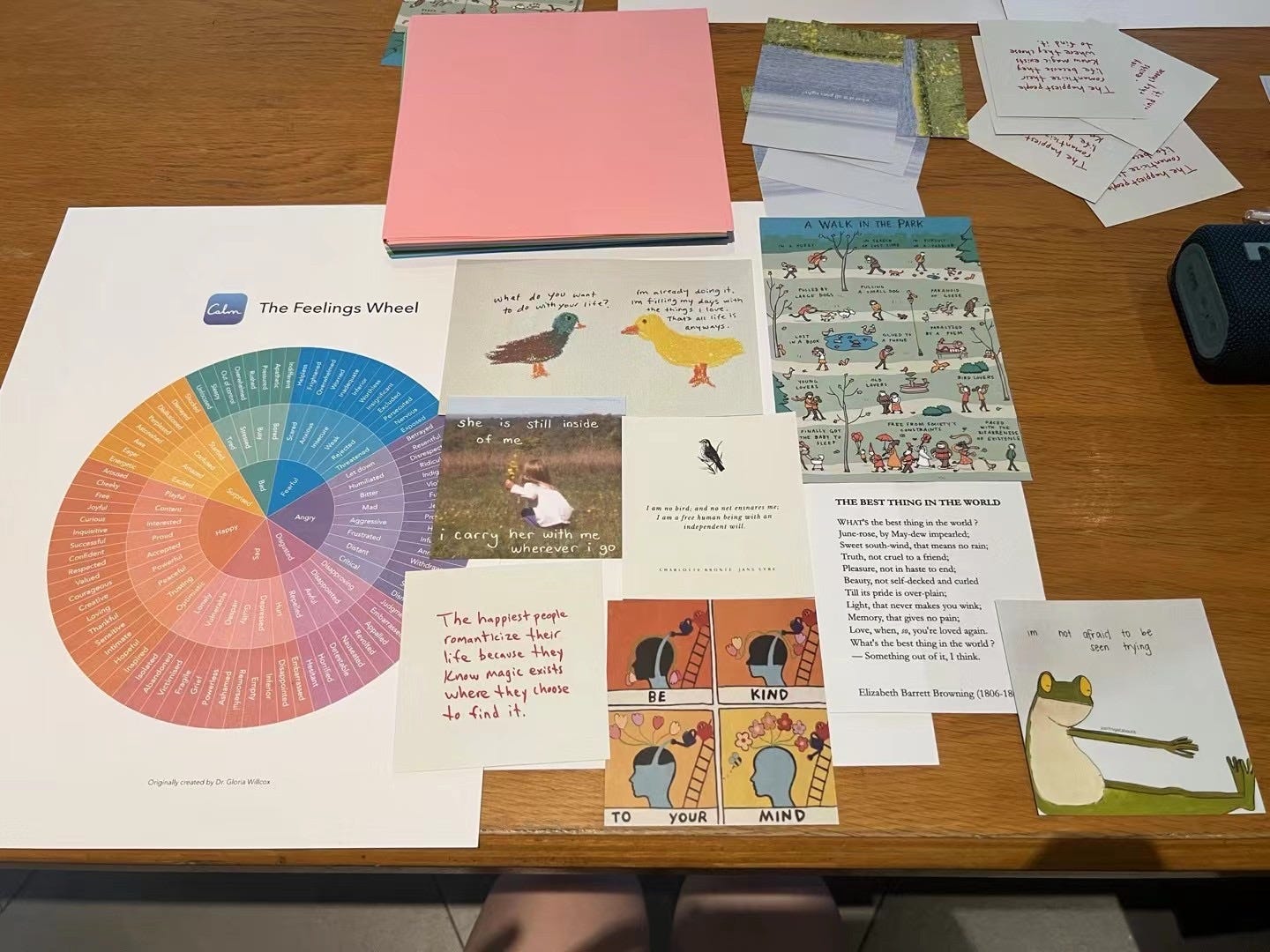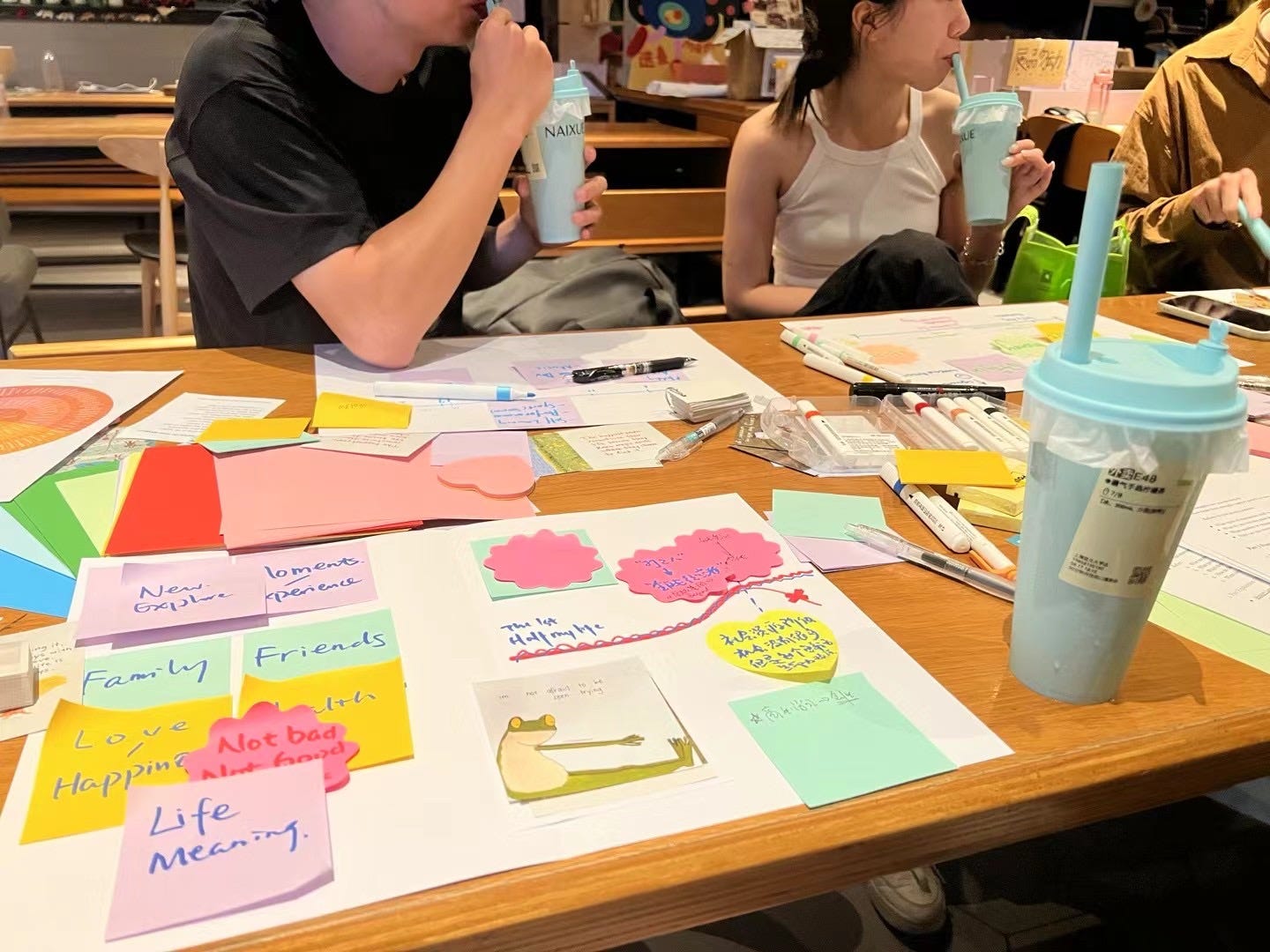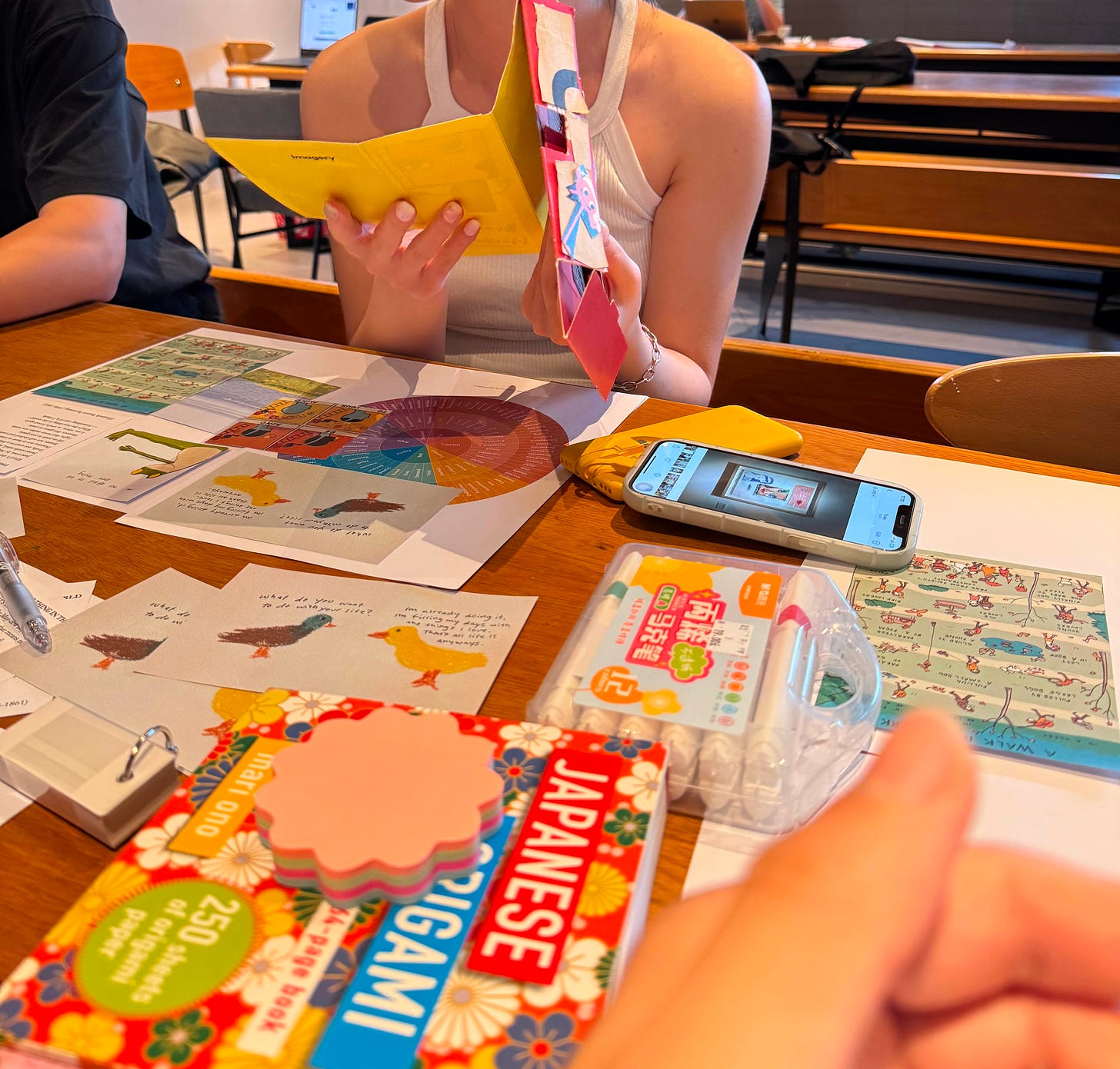A kind of magic happens when you fill a space with curious, good-hearted people. Ideas bounce like fireflies, illuminating corners of thought we'd never explored alone. It's this magic that I've come to believe to be essential in the development of any tool or technology meant to foster personal growth.
This spring, I found myself consumed by a vision. On subway rides and stolen moments, I sketched and dreamed of an app – something that guides us from curiosity to deep learning, weaving connections between everything we care about. I tested early prototypes with friends and strangers on the street (and making new friends that way), finding inspiration from so many small designs around me.
But as the idea took shape, so did a nagging doubt. As an optimist who's wary of blind techno-utopianism, I grappled with a fundamental question: Can an app truly help us find deeper meaning in life?
Tools can only be the means towards an end, and even the means can lead us astray albeit designed with good intentions. I believe that technology is only good when it is an active tool –– to engage, to draw inspiration from what we pay attention to, to free us from mundane tasks so we can focus on higher cognitive work. It should support and challenge our judgment, not lead us to outsource and avoid hard decisions.
Yet the line between enabling agency and creating dependency is faint, especially for a process as complex as learning with many integral elements –– curiosity, discovery, feedback mechanism, self-discipline, research, observational learning, reinforcement learning, knowledge application, and connection building… In designing tools for learning and personal growth, I ponder: Are we empowering users or simply creating a new form of reliance?
While my app isn't quite ready for its debut, the ethos surrounding it has crystallized faster than I could iterate. At its heart lies a simple goal: to enliven the ecosystem of knowledge and guide individuals in their search for life's purpose.
Okay, I know it’s an embellished mission statement, but here’s a crucial realization: No digital ecosystem of knowledge can truly thrive without human connection. If I’ve learned anything about communities in the past few years, it is that the people who impact our lives most profoundly are those closest to us. This is why I believe that to realize the full potential of any personal growth tool, we must cultivate vibrant offline communities alongside it.
To explore these ideas further, I recently hosted a Design Personal Growth Workshop. I invited friends who embody the qualities I hope to nurture through my app: curiosity, ambition, creativity, and self-motivation. My goal was twofold: to investigate what learning and personal growth mean to individuals, and to see if the ideal community to complement our digital tools might be more accessible than we imagine.
At work, I use lots of generative design methods for co-creation. We include users from the early stages of design to build something not only they want but may help them problem-solve together. This process trusts that people know what they need best, and designers and engineers are just here to bring out the best version of that tool collectively with their expertise and methodologies. Co-creation is especially effective in the early stages when a product is still taking shape (see Figure#1.7).
People need not only to obtain things, they need above all the freedom to make things among which they can live, to give shape to them according to their own tastes, and to put them to use in caring for and about others.
–– Ivan Illich (1975)
Personal growth happens when we take the steps to reach for an image of what we’d like to become. It is deeply rooted in our self-knowledge with an honest understanding of our past, so we can create the condition in our present environment that could launch us into the future. In other words, personal growth cuts through three temporal realms: past, now, and future (see Figure#2.17).
A certain level of clarity and understanding is needed to see the potential we hold within ourselves. Without intentional steps, it’d be crooked growth. Like any grand architecture project, personal growth can benefit from having a blueprint, but so much of the growth also happens in serendipity: when we least expect it, when we are at the mercy of outside connections, and when we are open to letting the forces usher us in unknown directions.
Designing a workshop for personal growth joins all of these aspects.
The Design Personal Growth Workshop: A Living Laboratory
The workshop anchors our thinking with three visualizations: Growth Landscape, Memory Lane, and A Day in the Future. To connect all three, there is also the curation of a Dashboard for elements that best embody who we are right now, and Bridge Building to map out actions we can take from the present to the future. (The full design and a checklist for materials can be found here.)
Growth Landscape
Use a large sheet of paper as a canvas, imagine your life as a field, with lively components such as love, friendship & community, family, career & professional growth, health & wellness, purpose & life direction, creativity & personal interests…
Create space for all the aspects you think are important in life. Now, use post-its of different colors and shapes to evaluate how lively each aspect is (i.e. green leaves for what’s thriving, yellow for potential for growth, blue clouds for obstacles, pink hearts for people or things that energize you, etc.) The code needs to be decipherable only by you.
Memory Lane
Imagine walking down a path, stopping at significant moments in your lives. Like traveling through eras. (Leave some space on the timeline and connect that to Growth Landscape.) At each stop, note any key decision or experience, and emotion associated with it (using the emotion wheel if needed), a lesson learned or skill gained, important people or support …
As you look at your Memory Lane, what patterns or themes do you notice in your growth journey? Now look at Growth Landscape and Memory Lane together, identify 203 areas from Growth Landscape that feel most important right now: have you successfully navigated a similar challenge before? What are some strategies or mindsets that helped you grow in the past? How do they apply to your current situation? If this area is thriving, how has it changed compared to the past? What gives you energy, and what doesn’t?
A Day in the Future
Imagine waking up as your ideal future self 5 years from now… (why 5 years? Because it feels like a less pressing mid-term to the final exam that is in 10 years!) What’s the first thing you see that brings you joy? Describe what you are doing. What projects are you most excited about? What are you doing for fun? …
Why is this the dream life? What makes each element aspirational?
So what came out of the workshop? Beyond everything, I think having people who show up to create a space like this in life is an extremely lucky thing. Showing up is the first step, and we can only gather feedback to begin improving when we’ve taken that action. Communities of go-getters are like mirrors held up in front of every one of us, reflecting what we see in each other and ourselves.
The kind of interactions I felt from our 2hours-turned-into-5hours-if-it-weren’t-because-the-restaurant-was-closing conversation, I’m afraid, pixels on a screen can never replicate. It was as if we each built a house of ideas, and when pieces didn't quite fit, others offered theirs to help complete the structure.
In the future, I’d love to create a series of co-design workshops like this one and open-source the materials so others can use them to gather their favorite people – or those they wish to connect with more deeply – and add their unique flavors to the workshops.
As I reflected on the workshop during my subway ride home, I found myself contemplating why humans ceaselessly challenge ourselves to grow. Perhaps there’s a yearning –– to collect things and ideas while always craving more, to shape our environments yet inevitably encountering new forces beyond our control, to experience the dizzying highs and crushing lows of existence without the chance of a do-over, each time discovering a bit more about ourselves. Growth is inevitable, it’s the only way forward; but the How is up to us.
Reference
Figures come from Convivial Toolbox: Generative research for the front end of design by Liz Sanders and Pieter Jan Strappers
Full workshop script is here.









